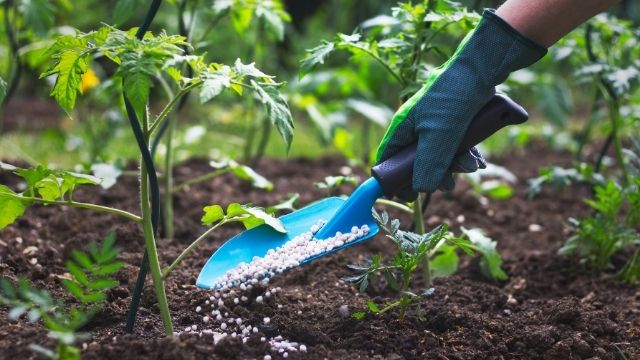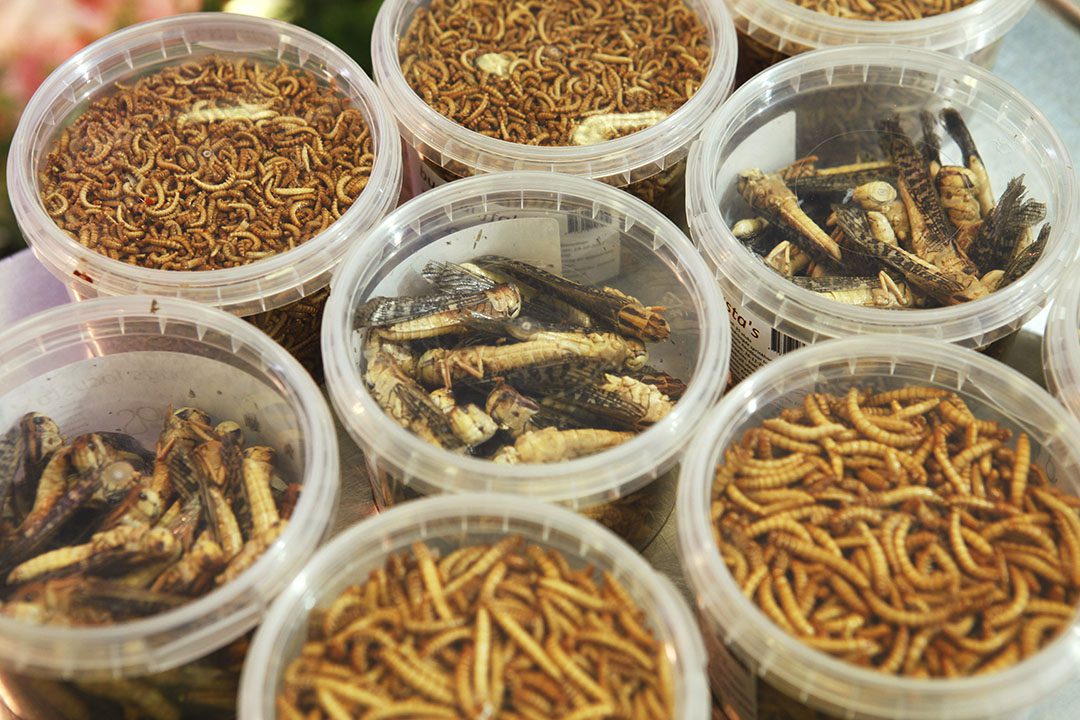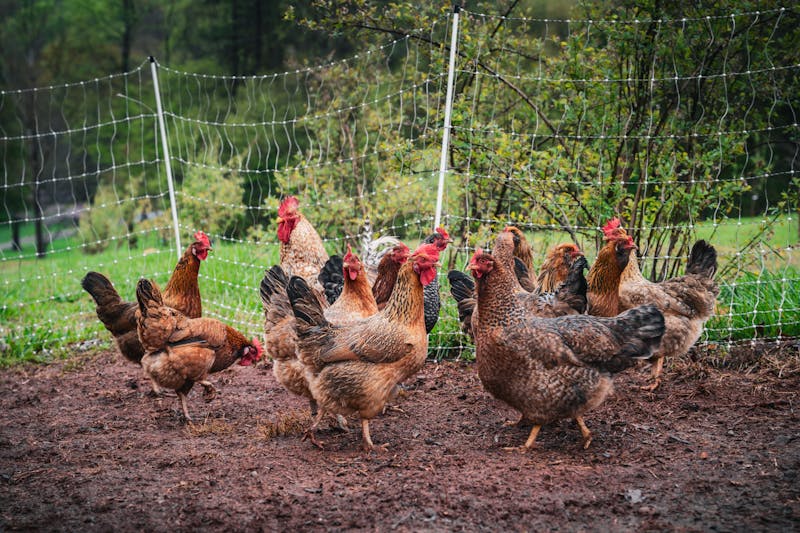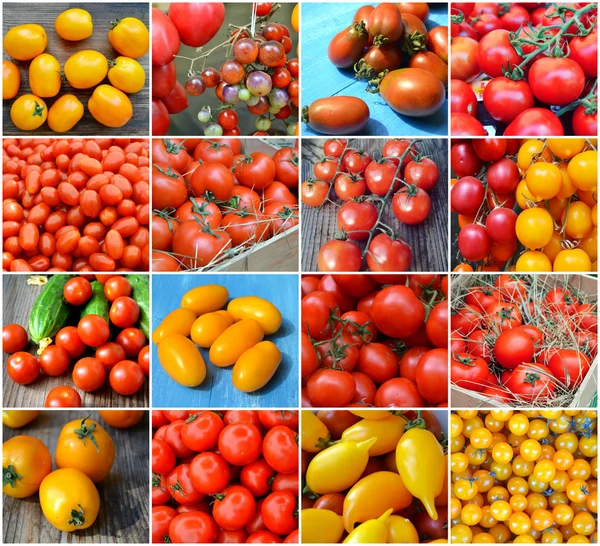Most farmers believe that using more fertilizer leads to bigger harvests—but what if I told you that the secret isn’t in using more, but in using the right amount? In fact, applying the wrong fertilizer rates could be costing you money and reducing your yields!
Fertilizer application rate refers to the precise amount of fertilizer needed per acre or hectare to supply essential nutrients to crops. it can be expressed as It is expressed as kg/Ha, bags/acre, or g/tree. Applying too little leads to nutrient deficiencies and stunted growth, while overapplication wastes money, harms soil health, and can even reduce yields.
In this guide, discover the best fertilizer application rates for planting and top dressing various crops in Kenya. You will get the right nutrients for vegetables like tomatoes, potatoes, and onions, cereals such as maize, and key cash crops like tea, coffee, and sugarcane.
Related: What you need to know about Types of fertilizers
How to Use fertilizers the best way
The recommendations given below are based on general guidelines. Individual farm conditions may vary; therefore, consulting with local agricultural extension services or agronomists is advisable for site-specific advice. In addition, consider soil testing, use of organic matter and right application timing,
Best Fertilizer for vegetables in Kenya
Looking for the fertilizer rate per horticulture crop in Kenya. Whether you are growing vegetables in a kitchen garden or you are in commercial vegetable farming, the following are the minimum recommended fertilizer rates;
specific rates per acre for each crop, ensuring clarity for farmers:
| Crop | Basal Application | Planting Fertilizer | Top-Dressing (First Split) | Top-Dressing (Second Split) |
|---|---|---|---|---|
| Tomatoes | 8 tons manure | 80 kg DAP | 40 kg CAN at 4 weeks | 80 kg CAN at 8 weeks |
| Potatoes | 5 tons manure | 200 kg DAP | None | None |
| Onions | 5 tons manure | 50 kg DAP | 50 kg CAN at week four | 50 kg CAN at week eight |
| Cabbages | 7 tons manure | None | 50 kg DAP at 1 week | 50 kg NPK 17:17:17 at 4 weeks |
| Kales | 7 tons manure | 50 kg |
Irish Potatoes
Best fertilisers for Potatoes, a staple crop in Kenya, require careful nutrient management for tuber formation. A basal application of 5 tons of manure per acre during land preparation improves soil fertility and water retention, critical for tuber development. At planting, apply 200 kg of DAP per acre, as per the standard recommendation that provides36 kg N and 92 kg P2O5 per acre, sufficient for early growth. No additional top-dressing is typically required, as DAP meets the crop’s needs,
Beetroot
For beetroot farming in Kenya, apply about 66 kg/acre of DAP of planting fertlizers to promote root development. Use biochar alongside NPK (17-17-17) to enhance soil health and beetroot quality. Nitrogen applications should be split, with 50% applied pre-planting and the rest as side-dressings over several weeks. Organic matter like compost can improve soil structure and nutrient retention.
Eggplants
The best fertilizers for eggplants in Kenya include a balanced NPK mix like 10-10-10. Apply this every 4-6 weeks to support continuous growth. Organic options like composted manure are beneficial for soil health and plant productivity. Consider micronutrient-embedded NPK fertilizers to enhance fruit quality and yield.
Broccoli
For broccoli in Kenya, apply about 400 kg/ha of NPK (23:23:0) at planting. Split nitrogen applications during seedling establishment, vegetative growth, and head formation. Organic matter like compost can improve soil structure and nutrient retention. Boron and calcium are essential for head development; ensure adequate levels through foliar applications if necessary.
Cabbage
The best fertilizers for cabbages in Kenya include a combination of both organic and inorganic options. Start by incorporating 7 tons of manure or compost per hectare before planting to enhance soil fertility and structure. At planting, apply about 55 kg/acre of DAP to support root development and leaf growth. After 3-4 weeks, top-dress with nitrogen-rich fertilizers like CAN at a rate of 55 kg/acre to promote leaf expansion. As the head starts forming, apply MOP at 50-75 kg/acre to ensure optimal head development. Maintain soil pH between 6.0 and 7.0 for optimal growth. Organic matter like compost can improve soil fertility and head quality.
Here are the specific rates per acre:
- Basal Application: 7 tons of manure or compost per hectare.
- Planting Fertilizer: 55 kg/acre of DAP.
- Nitrogen Top-Dressing: 55 kg/acre of CAN during the vegetative phase.
- Head Formation: 50-75 kg/acre of MOP.
Melon
For watermelons in Kenya, the best fertilizers include a combination of organic and inorganic options. Start by incorporating well-decomposed manure into the top 15-20 cm of soil to enhance soil fertility and structure. At planting, apply about 20 kg/acre of DAP to support root development. As the vines grow, use nitrogen-rich fertilizers like CAN at a rate of 40 kg/acre to promote leaf growth. Once the plants start flowering, switch to high phosphorus and potassium NPK fertilizers to enhance fruit set and quality. Ensure adequate calcium levels to prevent blossom end rot. Organic matter like compost can improve soil health and nutrient retention. Regular soil testing helps adjust fertilizer applications based on specific nutrient needs.
Here are the specific rates per acre:
- Basal Application: 20 kg/acre of DAP.
- Nitrogen Top-Dressing: 40 kg/acre of CAN during the vegetative phase.
- Fruit Formation: High phosphorus and potassium NPK fertilizers at 60 kg/acre.
- Calcium Application: Foliar sprays with calcium nitrate to prevent blossom end rot.
Carrots
Carrots in Kenya require balanced macronutrients—nitrogen for leaf growth, phosphorus for root support, and potassium for water absorption. Apply about 44 kg/acre of DAP or DSP at planting. Top-dress with CAN to support root formation. Secondary nutrients like calcium, magnesium, and sulfur are also beneficial. Soil should be well-draining and free of debris to prevent root deformation.
Cucumber
The best fertilizers for cucumbers in Kenya include balanced NPK fertilizers applied every 4-6 weeks. Use about 44 kg/acre of DSP at planting. As the plants flower, emphasize potassium for fruit development. Regular pruning and training can enhance fruit production and quality.
Kales (sukuma Wiki)
For kales in Kenya, the best fertilizers include a combination of organic and inorganic options. Start by incorporating well-decomposed manure into the soil at a rate of about 7 tons per acre during land preparation. This enriches the soil with essential organic matter and nutrients. At planting, apply about 5 grams of a balanced fertilizer per hole to ensure young kale plants receive adequate nutrients. For top-dressing, use Calcium Ammonium Nitrate (CAN) at a rate of 40 kg per acre when the plants are about 20 cm tall, and increase to 80 kg per acre three weeks later.
Here are the specific rates per acre:
- Basal Application: 7 tons of manure per acre.
- Planting Fertilizer: 5 grams per planting hole (approximately 50 kg per acre).
- Top-Dressing:
- First split: 40 kg/acre of CAN when plants are 20 cm tall.
- Second split: 80 kg/acre of CAN three weeks later.
Leeks
Leeks in Kenya benefit from about 55 kg/acre of DAP at planting. Top-dress with CAN during the vegetative phase. Ensure adequate potassium levels for optimal bulb development. Soil should be well-draining and have a pH between 6.0 and 7.0 for best results.
Lettuce
The best fertilizers for lettuce in Kenya include about 44 kg/acre of DSP or 88 kg/acre of DSP at planting. Top-dress with CAN during the vegetative phase to support crisp leaf growth. Maintain soil pH between 6.0 and 7.0 for optimal growth. Regular watering and cooler temperatures enhance leaf quality.
Bulb Onions
Best fertilizers for onions in Kenya require high nitrogen for bulb development. Start with a basal application of 5 tons of manure per acre during land preparation ensuring soil richness. At planting, apply 50 kg of DAP per acre, providing initial N and P. For top-dressing, use CAN at 50 kg per acre at week four and another 50 kg at week eight, supporting bulb growth. Use Organic fertilizer like Safi Sarvi or Premium Planting fertilizers enhance soil microbial life, increasing yields without altering soil pH.
Tomato
For the best fertilizers for tomatoes farming in Kenya, start with a basal application of well-decomposed manure at 8 tons per acre during land preparation. This enriches the soil with organic matter, improving water retention and nutrient availability. At planting, apply 80 kg of DAP (Diammonium Phosphate) per acre to provide initial nitrogen (N) and phosphorus (P) for root and early growth. For top-dressing, use Calcium Ammonium Nitrate (CAN) at 40 kg per acre when plants are 4 weeks old, followed by 80 kg per acre at 8 weeks after transplanting, aligning with growth stages for flowering and fruit development.
Best Fertilizer for beans in Kenya?
Are you looking for the best fertilizer for planting beans in Kenya?
This comprehensive analysis provides an in-depth examination of fertilizer recommendations for various legume crops, including beans, French beans, cowpeas, garden peas, and snow peas, grown in Kenya, based on agricultural research and practices specific to the region.
The following table summarizes the specific rates per acre for each crop.
| Crop | Basal Application (Manure, tons/acre) | Planting Fertilizer | Top-Dressing |
|---|---|---|---|
| Beans (General) | 2–4 (optional, debated) | 81 kg/acre (DAP, or NPK 23:23:0, or 17:17:17) | None |
| French Beans | 2–3.2 (optional, debated) | 81 kg/acre (DAP) | 40 kg/acre (CAN) |
| Cowpeas | 2–4 (optional, debated) | 40 kg/acre (TSP) or 32 kg/acre (TSP) or 61 kg/acre (NPK 20:20:20) | 61 kg/acre (CAN) or 41 kg/acre (Urea, if not using NPK 20:20:20) |
| Garden Peas | 2–3.2 (optional, debated) | 81 kg/acre (TSP) | 61 kg/acre (CAN) |
| Snow Peas | 2–4 (optional, debated) | 101 kg/acre (DAP) | 81 kg/acre (CAN) |
Beans and Other Legume Plants
The best fertilers for beans in Kenya is required at planting only. The recommended rate is 200 kg/ha of DAP (Diammonium Phosphate) or NPK 23:23:0 or NPK 17:17:17, depending on soil test results. DAP at 200 kg/ha provides 36 kg/ha of nitrogen and 92 kg/ha of P2O5, supporting root development and early growth. NPK 23:23:0 at 200 kg/ha provides 46 kg/ha each of nitrogen and P2O5, while NPK 17:17:17 provides 34 kg/ha each of N, P2O5, and K2O.
No basal application is needed, as legumes fix their own nitrogen, though soil testing is crucial to confirm. In some regions, farmers add manure at 5-10 tons per hectare (about 2-4 tons per acre) as a basal application to improve soil structure, which can be controversial due to cost versus benefit, especially in fertile soils.
French Beans
Best fertilizers for french beans in Kenya is applying of 200 kg/ha of DAP at planting, providing 36 kg/ha of nitrogen and 92 kg/ha of P2O5. Top-dressing is done with 100 kg/ha of CAN (Calcium Ammonium Nitrate), adding 27 kg/ha of nitrogen (assuming 27% N). This supports both root development and vegetative growth, aligning with general bean fertilization practices. The total nitrogen provided (63 kg/ha) seems reasonable for French beans, which are grown for their green pods and may require more nitrogen compared to dry beans. Basal application is not typically mentioned, but some farmers use 5-8 tons per hectare of manure (about 2-3 tons per acre) to enhance soil fertility, especially in nutrient-poor soils, which is an area of debate among agronomists.
Cowpeas
Cowpeas, known for their ability to fix nitrogen, have varied fertilizer recommendations. You can apply
- 100 kg/ha of DSP or 80 kg/ha of TSP at planting, and top-dressing with 150 kg/ha of CAN or 100 kg/ha of Urea.
- 150 kg/ha of NPK 20:20:20 at planting with no top-dressing. Assuming DSP is a typo for TSP (Triple Super Phosphate, 0-46-0), 100 kg/ha TSP provides 46 kg/ha P2O5, and 80 kg/ha provides 36.8 kg/ha P2O5, which is plausible for phosphorus needs.
For top-dressing, CAN at 150 kg/ha provides 40.5 kg/ha N, and Urea at 100 kg/ha provides 46 kg/ha N, supporting growth. The alternative of 150 kg/ha NPK 20:20:20 provides 30 kg/ha each of N, P2O5, and K2O.
Garden Peas
Garden peas require 200 kg/ha of TSP at planting, providing 92 kg/ha P2O5, and top-dressing with 150 kg/ha of CAN, adding 40.5 kg/ha N (assuming 27% N), as per the user. This approach ensures root development and growth, though excessive nitrogen can reduce pod formation.
Snow Peas
Best fertilizers for snow peas recomm in Kenya are 250 kg/ha of DAP at planting and 200 kg/ha of CAN for top-dressing. Assuming DAP (18-46-0), 250 kg/ha DAP provides 45 kg/ha N and 115 kg/ha P2O5, supporting early growth,
Best Fertilizer for Maize in Kenya
Are you a cereal farmer looking for fertilizer rates for barley, maize wheat, or rice crops in Kenya? The following gives you the planting and top dressing rates. It is recommended to do a soil test and follow for accurate soil health management recommendations
The following table summarizes the specific rates per acre for each crop, ensuring clarity for farmers:
| Crop | Basal Application (Manure, tons/acre) | Planting Fertilizer | Top-Dressing (First Split) | Top-Dressing (Second Split) |
|---|---|---|---|---|
| Maize | 5-10 (optional) | 80 kg/acre DAP | 40 kg/acre CAN at 4-6 weeks | 40 kg/acre CAN at 8-10 weeks |
| Wheat | 4-8 (optional) | 80 kg/acre DAP | 40 kg/acre CAN at tillering | 40 kg/acre CAN at stem elongation |
| Barley | 4-8 (optional) | 80 kg/acre DAP | 40 kg/acre CAN at tillering | 40 kg/acre CAN at stem elongation |
| Rice | Not common | 100 kg/acre DAP | 40 kg/acre CAN at mid-tillering | 40 kg/acre CAN at panicle initiation |
| Millet (Finger) | 3.2-4.8 (optional, debated) | 10 kg/acre DAP | 50 kg/acre CAN at flowering | None |
| Millet (Pearl) | 3.2-4.8 (optional, debated) | 20 kg/acre DAP | 50 kg/acre CAN at flowering | None |
| Sorghum | 3-6 (optional) | 100 kg/acre NPK 20:20:0 | 50 kg/acre CAN at flowering | None |
Maize
The best fertilizers for maize farming in Kenya, start with 5-10 tons per acre of well-decomposed manure as a basal application (optional). At planting, apply 80 kg per acre of DAP. Top-dress with 40 kg per acre of CAN at 4-6 weeks and another 40 kg per acre at 8-10 weeks after planting to support grain formation.
Wheat and Barley
The best fertilizers for wheat and barley farming in Kenya, use 4-8 tons per acre of well-decomposed manure as a basal application (optional). Apply 80 kg per acre of DAP at planting, and top-dress with 40 kg per acre of CAN at tillering and another 40 kg per acre at stem elongation for grain development.
Rice
For rice, apply phosphorus equivalent to 16 kg per acre P2O5 (using DAP or TSP) and potassium equivalent to 16 kg per acre K2O (using MOP) as basal. At transplanting, add nitrogen equivalent to 16 kg per acre N (using urea or CAN) and potassium if not already applied. Top-dress with 16 kg per acre N at mid-tillering and another 16 kg per acre N at panicle initiation for flowering and grain formation.
Millet (Finger and Pearl)
For millet, apply 8-12 tons per ha of organic manure (approximately 3.2-4.8 tons per acre) as basal. At planting, apply 10 kg per acre of DAP for finger millet and 20 kg per acre for pearl millet. Top-dress with 50 kg per acre of CAN at flowering to support grain formation.
Sorghum
For sorghum, use 3-6 tons per acre of manure as basal (optional). Apply 100 kg per acre of NPK 20:20:0 at planting and top-dress with 50 kg per acre of CAN at flowering to aid grain development.
Best Fertilizer for fruitS in Kenya
Unlike the horticulture and grain crops above, The fruit trees in Kenya are perennial plants requiring fertilizer application for a long period of time.
Avocado
The best fertilizers for you avocado trees depend on their age. The table below summarizes the recommended fertilizer application rates for Hass and Fuerte avocado trees per age. The rate in g/tree for CAN and TSP fertilizers.
| Age of Avocado tree | CAN fertilizer (g/tree) | TSP fertilizer (g/tree) |
|---|---|---|
| 1-3 years | 120 | 120 |
| 4-5 years | 220 | 450 |
| 6-7 years | 450 | 650 |
| Over 8 years | 650 | 650 |
Bananas
to plant the Bananas, apply 200kg/Ha of DAP planting fertilizer or 150 kg/Ha of NPK 23:23:0. During topdressing, apply 300kg of CAN fertilizer.
Citrus
The fertilizer application rate for citrus fruits like lemon, lime, and pixie oranges depends on the age of the tree. The table below summarizes the rate in g/tree for CAN and TSP fertilizers.
| Age of citrus fruit tree | CAN fertilizer (g/tree) | TSP fertilizer (g/tree) |
|---|---|---|
| 1-3 years | 200 | 150 |
| 4-5 years | 400 | 500 |
| Over 5 years | 600 | 1000 |
Mango
the recommended fertilizer application rate for Mango trees depends on the age of the tree. In years 1-3 apply 150g/tree of TSP or DAP fertilizer and 240g/tree of CAN. In years 4-5 apply 400g/tree of CAN and 500g/tree of TSP or DAP. Over 5-7 years apply 400g/mango tree of CAN and 1000g/tree of DAP or TSP phosphate(K) fertilizers.
| Age of mango tree | CAN fertilizer (g/tree) | TSP or DAP fertilizer (g/tree) |
|---|---|---|
| 1-3 years | 240 | 150 |
| 4-5 years | 400 | 500 |
| Over 5 years | 400 | 1000 |
Passion fruits
To plant the passion fruits, the recommended fertilizer application rate is 200Kg/Ha of TSP or DAP phosphorus (P) fertilizer. For topdressing apply 300Kg/Ha of the CAN fertilizer.
Pineapples
The sweet fruit has a recommendation rate of 500 kg/ha of DAP. Besides you can use 250kg/Ha of NPK 23:23:0 to plant pineapples or 200kg/Ha of the SA fertilizer. To get sweet pineapples, top-dress them by applying 200kg/Ha of urea nitrogen fertilizer
BEST Fertilizer for cash crops in Kenya
The cost of fertilizers is a key determiner in the profitability of key cash crops in Kenya such as tea, coffee, and sugarcane. These two require perpetual application of fertilizers over long periods of time. the following are the top rates.
Tea
For planting and top-dressing tea, use an acidic compound fertilizer like NPK 26:5:5 or 20:10:10. In the 1st year, apply 180kg/ha (6g per plant) 6 weeks after transplanting and thereafter at 8 weeks intervals up to the end of the first year. In the 2nd year, apply 160kg/ha (15g/bush) every 3 months. In the 3rd year, Apply 720kg/ha (67g/bush) once. The same applies in the 4th year where you Apply 920kg/ha (86g/bush) once.5th year, Prune and then apply 600kg/ha (56 g/bush) at tipping.
| Age of tea Bushes | NPK 26:5:5 or 20:10:10. (g/tree) | NPK 26:5:5 or 20:10:10. (Kg/Ha) |
|---|---|---|
| Year 1 | 6 | 180*6 |
| Year 2 | 15 | 160*4 |
| Year 3 | 67 | 720*1 |
| Year 4 | 86 | 920 |
| Year 5 | 56 | 600 |
Sugarcane
to Plant sugarcane, use 2-3.5 bags/ha of DAP or 6-9 bags/ha of the SSP fertilizer. To top dress apply 4-5 bags/ha of urea or 8-9 bags/ha CAN depending on your agrozone and crop cycle.
Coffee
Basal Application: Start with 5-10 tons per acre of well-decomposed manure (optional, depending on soil fertility) to enhance soil structure and nutrient availability.
Planting (for new trees): Mix top soil with 50 kg per acre of farmyard manure and 50 kg per acre of DAP to provide initial nitrogen and phosphorus for root development.
For Established Trees:
- Apply NPK 20:10:10 at 250 kg per acre once a year before the rainy season for balanced nutrition.
- Top-dress with Calcium Ammonium Nitrate (CAN) at 100 kg per acre, split into two applications: 50 kg at the start of rains and 50 kg after flowering to support vegetative growth and fruit development.
Macadamia
Basal Application: Use 5-10 tons per acre of well-decomposed manure (optional) to improve soil fertility, especially for young trees.
Planting (for new trees): Mix top soil with 20 kg per acre of farmyard manure and 300 g per tree of NPK 17:17:17, providing essential nutrients for early growth.
For Established Trees:
- Apply NPK 17:17:17 at 100 kg per acre once a year to ensure balanced nutrition.
- Top-dress with CAN at 50 kg per acre, split into two applications during the growing season to support nut production.
| Crop | Basal Application (Manure, tons/acre) | Planting Fertilizer | Annual Fertilizer (Established Trees) | Top-Dressing (Splits) |
|---|---|---|---|---|
| Coffee | 5-10 (optional) | 50 kg/acre DAP + manure | 250 kg/acre NPK 20:10:10 | 100 kg/acre CAN (50 kg at start of rains, 50 kg after flowering) |
| Macadamia | 5-10 (optional) | 25 kg/acre NPK 17:17:17 + manure | 100 kg/acre NPK 17:17:17 | 50 kg/acre CAN (25 kg each split during growing season) |
Read more:
- Ministry of Agriculture (2012): Crops Extension Pocket Handbook Vol. 1 – Field Crops.
- Fertilizer Consumption & Fertilizer Use by Crop (FUBC) in Kenya, September 2015
Read Next: Where to Buy Fertilizers in Kenya




The recommendations for fertilizer application rates should have included also the rates for manure application in different agricultural ecological zones of kenya.